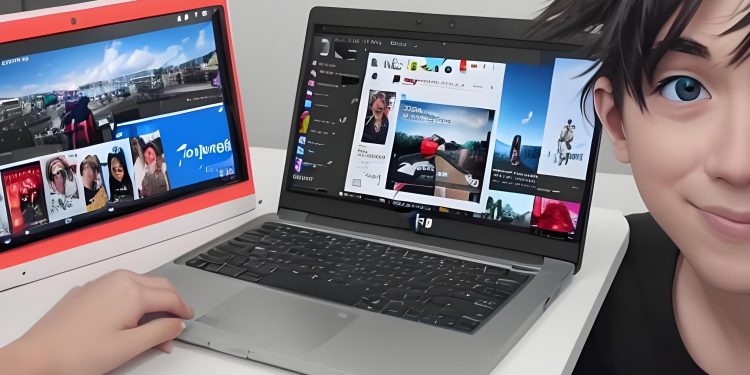Introduction
In today’s world, media and the media landscape play a crucial role in shaping public opinion, influencing culture, and entertaining millions. Among the many media platforms that have emerged in recent decades, YouTube occupies a special place. Starting as a small startup in the distant year 2005, YouTube has grown into a massive media empire, exerting a profound influence on the realms of entertainment, education, and information dissemination. In this article, we will explore the evolution of YouTube, its impact on contemporary society, and the challenges the platform faces.
I. Evolution of YouTube
From Startup to Media Giant
YouTube’s journey since 2005 has been nothing short of remarkable. It began as a startup founded by Chad Hurley, Steve Chen, and Jawed Karim in a garage. Soon after its launch, the platform caught the attention of Google, and in 2006, YouTube was acquired by this technological giant for $1.65 billion. This pivotal moment in YouTube’s history provided the platform with the resources and opportunities for further development.
Diversification of Content
In its early years, YouTube was primarily a platform for uploading and viewing short videos, often with humorous or home video content. However, over time, YouTube diversified its content, including entertainment videos, educational content, music, news, and much more. This diversification has made YouTube one of the most diverse platforms on the internet.
Professional Content Creators
As YouTube continued to evolve, professional content creators emerged. They began producing and uploading videos to the platform, becoming a reliable source of income for some and achieving global stardom. These content creators cover a wide range of topics, from gaming and beauty to technical reviews and culinary expertise.
Premium Content and Streaming
Another significant development in YouTube’s evolution was the introduction of paid premium content and streaming. Paid subscriptions allowed content creators to earn additional income and invest more in the development of their channels. The introduction of YouTube Premium also enabled users to watch videos without ads and offline.
II. Impact of YouTube on Contemporary Society
Entertainment Source
YouTube has become the primary source of entertainment for millions of people. Videos on YouTube encompass all aspects of entertainment, from music videos and comedy shows to gaming and movie reviews. Many vloggers have become global celebrities through their channels, with their influence rivaling that of stars in traditional media formats.
Education and Self-Learning
YouTube has also become a powerful tool for education and self-learning. Hundreds of thousands of educational channels offer free lessons on various subjects, from mathematics to culinary arts. Many educational institutions and educators use YouTube to disseminate educational content.
Influence on Media and News Sources
YouTube has influenced traditional media and news sources as well. Many news organizations have established their own channels on the platform to reach a wide audience, particularly among younger viewers. However, this has also raised questions about the quality and credibility of information on YouTube, prompting concerns about combating misinformation.
Global Community
YouTube brings people from all over the world together. Videos can be uploaded in dozens of languages, allowing diverse cultures and communities to exchange ideas and experiences. Events and trends in one part of the world can quickly spread through YouTube videos and impact people’s opinions and behaviors globally.
III. Challenges and the Future
Despite its success, YouTube faces several challenges. Issues related to copyright and intellectual property have sparked numerous disputes and legal proceedings. Additionally, YouTube has grappled with the problem of misinformation, manipulation, and fake news, raising important questions about the platform’s role in shaping public opinion.
The future of YouTube promises to remain dynamic. The platform will continue to develop technologies and features to attract and retain its audience. The rapid development of virtual and augmented reality may change the ways in which users interact with content on YouTube.
Conclusion
YouTube has reshaped the media landscape and made a substantial contribution to modern society. It has become a powerful tool for entertainment, education, and information for millions of people. However, its influence also comes with challenges, such as misinformation and copyright issues. It is essential to continue monitoring the evolution of YouTube and develop measures to enhance its impact on society and culture.








